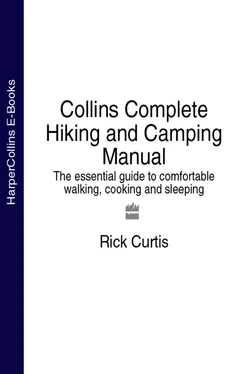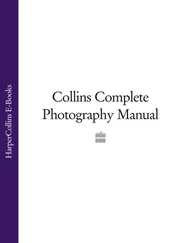Whether you’re going for a one-day hike on a local trail or a month-long expedition to a remote area, you need to thoroughly plan what equipment to bring. The equipment assessment for your trip should cover the following areas:
PERSONAL EQUIPMENT
Clothing Shirts, pants, boots, hats, and so on
Travel What is needed for travel—just your feet or a canoe, a bike, cross-country skis, etc.
Storage What you use to carry personal and group equipment—a backpack, bike panniers, waterproof bags for canoeing, etc.
Sleeping Sleeping bag, foam/inflatable pad
Miscellaneous Water bottles, toiletries, personal items
GROUP EQUIPMENT
Shelter Evaluate the type of shelter required for the size of the group and anticipated weather conditions—tarpaulin, tent, or shelters on the trail.
Cooking Stoves, pots and pans, utensils
Hygiene Items for water purification, handwashing, going to the bathroom
First aid See pagefor a list of first-aid essentials
Repair Anticipate what might break and have the necessary replacement parts and tools.
When deciding what equipment to bring, review your planned route and answer the following questions:
How long is the trip?
How many people are going? How does that affect the amount of group equipment needed?
Are people providing their own personal equipment?
Who is providing group equipment?
What season is it? What are the typical maximum and minimum temperatures during the day? What is typical weather (foggy morning, afternoon thunderstorms, etc.)? What is atypical weather (can it snow in July)? (See “ Weather and Nature.”)
What is the altitude? What effect will the altitude have on temperature? (See “ Temperature Ranges,”.)
What are the trip activities? What equipment will be needed for different activities?
Where is the trip? Is it remote or accessible?
Is equipment resupply a possibility or will you have to carry everything?
Do you need any special equipment for Leave No Trace camping? (See Chapter 5.)
How will you deal with equipment repair if things break? What equipment items are more likely to break? What equipment items, if broken, would create serious problems for the trip (e.g., stoves)?
THE ESSENTIALS
No matter where you are going, and whether you are out for a day or a month, there are some pieces of equipment that are considered essential for safe hiking travel. There are countless tales of hikers who have gotten into trouble, even on short day hikes, because they neglected these essentials.
Map
Compass (and knowledge of how to use it)
Extra food
Extra clothing (polypropylene, fleece, or other insulating clothing)
Water bottle (full, 1–2 quarts)
Flashlight/headlamp with extra batteries
Rain gear
Pocketknife
Matches/lighter (best to have at least two sources for lighting a fire)
Candle or firestarter to help light a fire
First-aid kit
Sunglasses and sunscreen
Other recommended items include:
Watch
Water purification system
Large rubbish bag, space blanket, tube tent, or small tarpaulin for emergency shelter
Foam or inflatable sleeping pad for ground insulation
CLOTHING
Knowing what to buy and wear is hard. There are so many different materials out there that do similar things, and everything has a fancy name that ends in something like -ex or -tec. As you are reading this, some industrial chemist in a lab somewhere is developing the next generation of smart fabrics while garment designers dream up innovative features. Clothing manufacturers crank out new lines so frequently that it isn’t possible to give you specific information on what’s available now, so here are some general guidelines to help you choose the best clothing for your trip.
REGULATING YOUR BODY TEMPERATURE
In order to plan the right clothing for a trip, you need to understand how your body reacts to the temperature and weather conditions you are likely to experience. Balancing the heat you are losing to the environment with the heat you generate from exercise and absorb from the environment is called thermoregulation. If you gain more heat than you lose, you experience a heat challenge. (See “ Regulating Body Temperature,”.) If you lose more heat than you gain, you experience a cold challenge. The ability to regulate body temperature is critical for preventing hyperthermia and hypothermia. (See “ Heat-Related Illnesses,” and “ Hypothermia,”.)
One way to regulate body temperature is to wear the right clothing and layer your clothing properly. Clothing items should be versatile enough to meet the various seasonal and weather conditions you may encounter. Since each person’s body is different, experiment to determine your individual requirements.
How Your Body Loses Heat
Heat leaves your body in the following ways:
Conductive Heat Loss occurs when contact is made between your body and a cooler surface. It can be minimized by not sitting on the cold ground, especially on snow. Conduction occurs 25 times faster with wet clothing than with dry. Prevention: Thickness of insulation.
Convective Heat Loss occurs when your body heat warms the air adjacent to your body; that air then rises and moves away from your body and fresh colder air replaces it. Wind increases the speed of heat loss through convection. The impact of heat loss from convection is measured by the windchill factor. (See “ Windchill Index,”.) This same process happens when you are submerged in cold water, but it happens much faster than in air because of the greater density of water. An important element in dressing for the outdoors is trapping the air around the body. Prevention: Windproof garments.
Radiant Heat Loss is caused by the escape of infrared radiation from the body. It is minimized by wearing insulative fabrics or those with reflective fabric that reflects the heat back to the body. Prevention: Thick layers of insulation or reflective material.
Evaporative Heat Loss occurs when perspiration (water) on the skin evaporates, drawing heat from the body. Changing water from a liquid to a gas takes a lot of energy. This is why sweating helps cool you off when you are hot. In hot weather, evaporation is essential in cooling your body down to prevent heat illnesses. (See “ Heat Challenge,”.) However, when it’s cold you want to minimize the amount of sweating to reduce evaporative heat loss. Prevention: Fabrics that move water away from the skin and vapor barriers ( page).
Trapping Your Body Heat
Clothing insulates you from the environment by trapping your body heat. The best insulation is a layer of static, unmoving air close to your body, known as “dead air.” This air is warmed by heat given off by your body (through radiation, conduction, and convection) and maintains a warm microclimate around your body. Clothing insulates by creating pockets of dead air. How much a particular clothing fabric insulates is based on its loft or thickness—the greater the loft, the more dead air space. Also, different fibers are better at creating dead air space than others. The goal is to find a fiber that creates lots of dead air space and at the same time doesn’t weigh very much. This is known as the warmth-to-weight ratio. A really light fiber like down has an excellent warmth-to-weight ratio.
Not all clothing is designed to insulate. In hot desert environments, thin layers of clothing with negligible loft are worn not to insulate but to provide shade from the sun to minimize overheating. You want something loose-fitting that ventilates and allows your sweat to evaporate, cooling you off.
THE LAYERING PRINCIPLE
By wearing multiple layers of different types of fabrics you can maintain a comfortable body temperature without excessive sweating (which can lead to heat loss). Throughout the day, you “layer up” or “layer down” as temperature conditions and/or activity levels change. By experimentation, you can determine which of the base layer, insulating layer, and shell layers you require in various situations. The layers should not restrict your movement and the outer layer, especially, should not be too tight, since tight outer layers squeeze the layers beneath and actually compress the dead air space in layers below, reducing their insulation value. You can modify one or all of the following factors to properly thermoregulate.
Читать дальше












